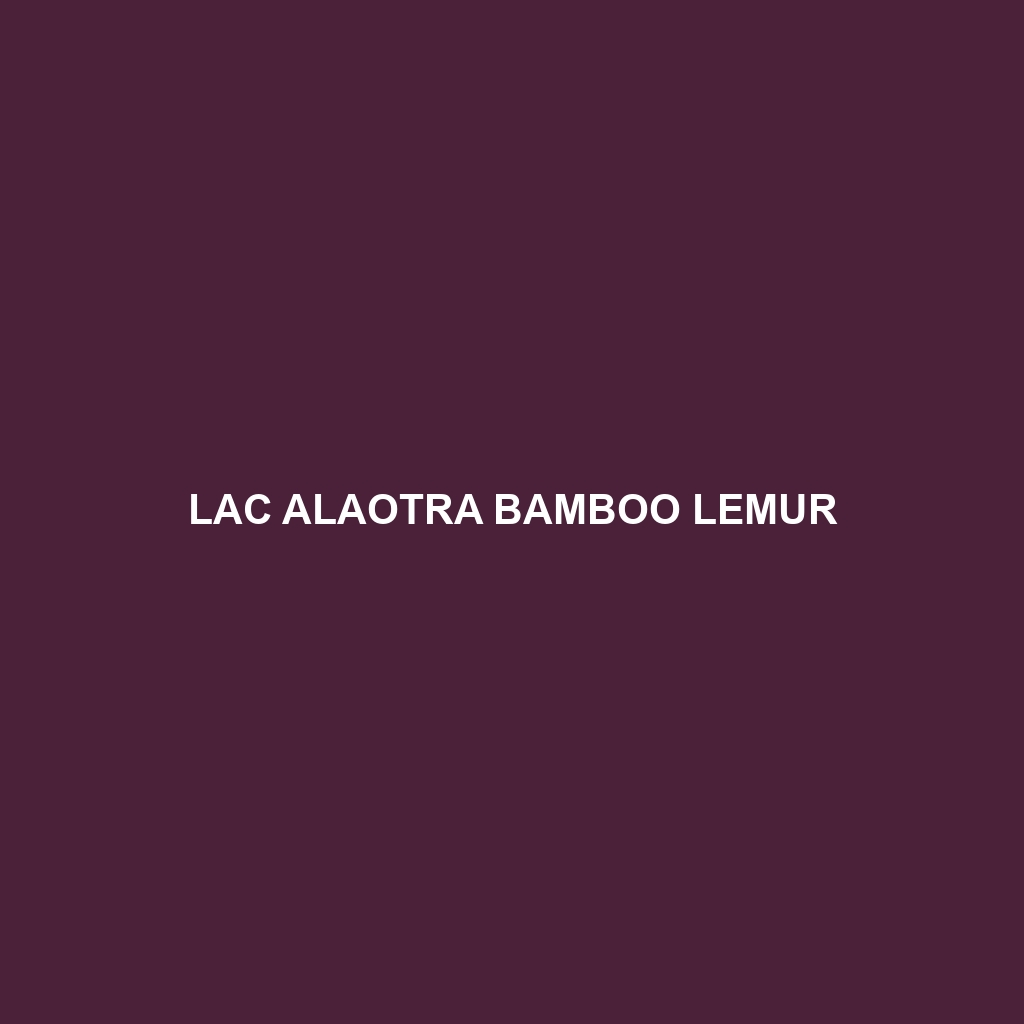Lac Alaotra Bamboo Lemur (Scientific Name: Hapalemur alaotrensis)
Common Name: Lac Alaotra Bamboo Lemur
Scientific Name: Hapalemur alaotrensis
Habitat
The Lac Alaotra Bamboo Lemur is primarily found in the marshes and swamp forests surrounding Lake Alaotra in Madagascar. These lemurs inhabit dense, tall, and grassy bamboo thickets, showcasing a preference for areas that provide ample cover and food sources. The specific geographic location contributes to their uniqueness, making them endemic to this fragile ecosystem.
Physical Characteristics
This species typically ranges from 3 to 4 feet in length, with a distinctive coloration that includes shades of brown and gray fur, often with lighter underbellies. Their long limbs and flexible tails assist in climbing and foraging among bamboo foliage. A notable feature of the Lac Alaotra Bamboo Lemur is its pronounced cheek pouches, which aid in storing food for later consumption.
Behavior
Lac Alaotra Bamboo Lemurs are primarily nocturnal, becoming active after sunset to forage for food. They are social animals and are often seen traveling in small family groups. Their vocalizations include a variety of chirps and grunts, which they use for communication and to maintain group cohesion. These lemurs exhibit strong maternal behaviors, with females often seen nurturing their young closely.
Diet
The diet of the Lac Alaotra Bamboo Lemur consists mainly of bamboo, which forms the cornerstone of their feeding habits. They consume various parts of the bamboo plant, including shoots, leaves, and stems. In addition to bamboo, they may also eat fruits and flowers when available, making their diet adaptable to seasonal changes in their habitat.
Reproduction
The breeding season for the Lac Alaotra Bamboo Lemur typically occurs from September to December. Females give birth to a single offspring after a gestation period of approximately 120 days. Infants are born with closed eyes and are dependent on their mothers for survival for several months. The nurturing behavior displayed by the mother is critical for the young lemur’s development.
Conservation Status
The Lac Alaotra Bamboo Lemur is classified as endangered on the IUCN Red List due to habitat destruction and hunting pressures. Conservation efforts are underway to protect their unique habitat and ensure the survival of this vulnerable species.
Interesting Facts
This species is significant not only for its rarity but also because it is one of the few lemurs that relies almost exclusively on bamboo. Additionally, the Lac Alaotra Bamboo Lemur is known for its high level of social behavior, which is relatively uncommon among lemur species.
Role in Ecosystem
The Lac Alaotra Bamboo Lemur plays an integral role in its ecosystem by helping to maintain bamboo growth through their foraging activities. They serve as a prey species for larger predators, thereby contributing to the food web dynamics. Their selective feeding helps in seed dispersal, which is crucial for the regeneration of flora in their habitat.
